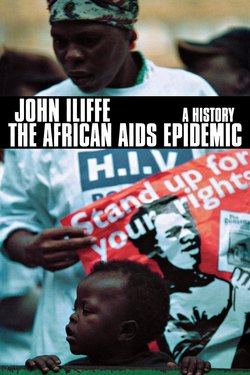The African AIDS Epidemic

Реклама. ООО «ЛитРес», ИНН: 7719571260.
Оглавление
John Iliffe. The African AIDS Epidemic
Отрывок из книги
THE AFRICAN AIDS EPIDEMIC
A History
.....
The limited capacity for expansion shown by the western equatorial epidemic during the 1990s had as its counterpart the survival there – perhaps especially in the countryside – of a diversity of HIV subtypes and recombinant forms far greater than anywhere else in the world. A more explosive epidemic might well have swamped this diversity by a single dominant strain more like those created by founder effects elsewhere. Yet it was from this region that the various forms of the virus were carried to the rest of the continent and the world. The most spectacular illustration was the transmission of the circulating recombinant form CRF01_AE from its hearth in the northern DR Congo and the neighbouring Central African Republic, where alone it was common early in the epidemic, to become the major strain of HIV in South-East Asia, although the means of this transmission are unknown.44 A less dramatic example was the other major circulating recombinant, CRF02_AG, which provided 60 per cent of HIV-1 strains in Cameroun during the 1990s, especially in the north, and some 54 per cent in Gabon. Its ancestors probably lay in the DR Congo – one of them was a virus collected at Yambuku in 1976 – but CRF02_AG itself was rare in both Congos during the 1990s and appears therefore to have taken shape in the Cameroun-Gabon region, whence it was carried northwards to become the dominant form of the virus throughout West Africa.45 By contrast, the subtypes (as distinct from CRFs) of HIV-1 transmitted to other parts of the continent appear to have been carried directly from the DR Congo. Subtype A was the most common form there, especially in the north, and was carried into East Africa, where it shared predominance with subtype D, itself rare elsewhere except in the DR Congo.46 Less certainly, subtype C, which came to dominate southern Africa (and Ethiopia), was common only in the south of the DR Congo, whence it may have been carried southwards.47 The history of this radiation from the equatorial region is the next issue to consider.
A majority of the men who died were involved in off-farm income generation, particularly those who had worked as itinerant traders. Others included carpenters, masons, and casual labourers . . . Only six of the deceased men could be strictly classified as full-time farmers. . . . As for the women, the majority of the deceased were, as may be expected, full-time farmers.23
.....